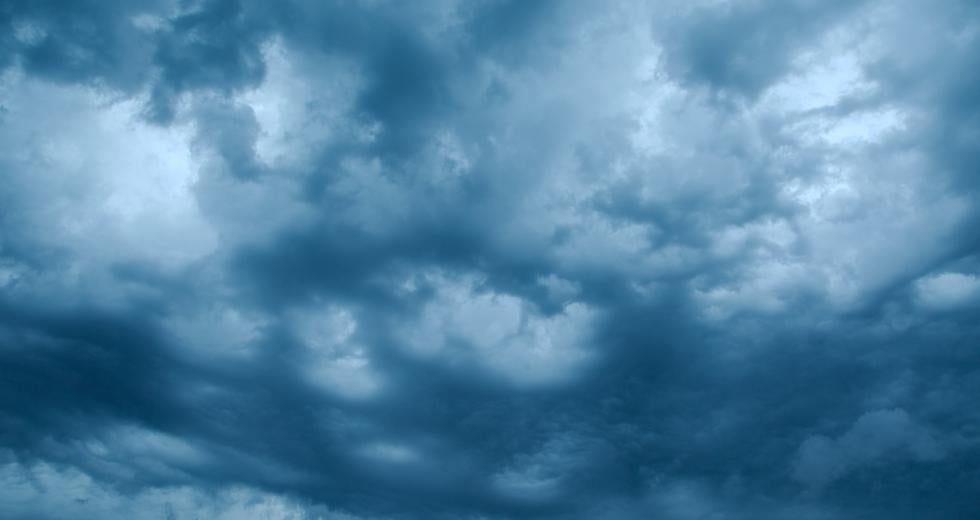Ninety percent of California’s annual precipitation usually falls between Oct. 1 and April 30, half of it from December through February. That means the next few weeks may be make-or-break for the state’s hopes of emerging from its four-year drought.
Where do things stand now?
The rain totals are looking neither terrible nor great — mostly above-normal readings for the “water year” (measured starting Oct. 1) in the northern two- thirds of the state, mostly below-normal in Southern California.
It’s the snow that really matters, though, because the Sierra Nevada snowpack amounts to the state’s largest water- storage facility. That’s looking pretty good as of today:
Last year the statewide snow totals on April 1 were only 5 percent of the modern historical average and possibly the lowest in 500 years. Barring a great melt-off between now and then, this year at least won’t be that kind of disaster.
Much of the state’s annual precipitation can be concentrated in a few giant storms, so there’s also hope (mixed with fears of flooding and mudslides) that this winter’s El Nino weather pattern could still deliver a mega-storm or two that puts the rain and snow totals well above average.
“Average,” though, can be a misleading concept when it comes to California water. Two maps in a new report on drought resilience from the Public Policy Institute of California drive this point home:
The map on the left shows that states along the West Coast have a far greater range of precipitation from place to place than elsewhere in the country. Southwestern California is home to North America’s driest desert, while the state’s northwestern corner has a temperate rain forest; even parts of Southern California (the mountainous parts) get about as much precipitation as very green states such as Michigan and Wisconsin. The map on the right, meanwhile, shows that precipitation varies far more from year to year in California than in any other state. Normal basically doesn’t exist.
The variability isn’t just between years, either, but within each year: As mentioned, the rainy season is packed into just a few months, and often just a few big storms. In most of California, the wettest 0.2 percent of days account for more than 80 percent of the year-to-year variance in precipitation. In Southern California it’s more like 90 percent.
Put all this together, and the state’s water picture comes into clearer focus. On average, the place has ample water, enough to support the country’s biggest agricultural sector and two of its five biggest urban agglomerations. But average doesn’t happen in California, and most of the state’s water challenges involve bridging its huge geographical and temporal precipitation disparities.
On the geographical front, a massive infrastructure was built in California during the first two-thirds of the 20th century to convey water from the north to the south, and from the Colorado River — fed by Rocky Mountain snowpack that is currently at 112 percent of average — to the west. Since the 1970s, though, adding significantly to that infrastructure has proved politically impossible, and environmental regulations and lawsuits have actually reduced the southward flows somewhat. Gov. Jerry Brown’s controversial Delta tunnel plan is meant in part to increase the reliability and quality of the southward water flow, but not the quantity (and the tunnels may never get built anyway).
Then there’s the temporal disparity. In the past, the Sierra snowpack has conveniently stored water in wet months for delivery in dry ones. Climate change may be permanently reducing that storage capacity — which means the state will have to rely more on man-made reservoirs aboveground and natural ones below (aka groundwater aquifers). These are also the state’s main means of bridging year-to-year variance in precipitation. Over the past few years, for example, the state has been taking far more out of its aboveground reservoirs than has been flowing in:
Something similar has been going on with the state’s groundwater reserves. California farmers have brought in the biggest harvests on record (in dollar terms) despite the lack of rain and snow, but they’ve done so by drilling deeper and deeper for water, causing residential wells to dry up and raising concerns that they may be permanently depleting aquifers.
New groundwater legislation, signed in 2014, is meant to address this, but will take decades to go into full effect. As for above-ground reservoirs, there is talk of building new ones and expanding an existing one, but none of the projects seem likely to happen anytime soon. Conservation has helped the state’s big urban areas muddle through, and water reuse holds much potential for the future. Desalination of seawater is also an option for some coastal cities, albeit still a really expensive, small-scale one.
And so California waits, and hopes that it rains and snows a lot over the next few weeks.
This column does not necessarily reflect the opinion of the editorial board or Bloomberg LP and its owners.
I’m having a little trouble wrapping my head around this statistic, but I think what it means is that Albert Hammond, who sang that “it never rains in Southern California … it pours, man, it pours,” was an astute observer of climatological phenomena. As measured by combined statistical area population. The legislation calls for local groundwater sustainability agencies to be formed, and gives them 20 years to implement groundwater-management plans.



